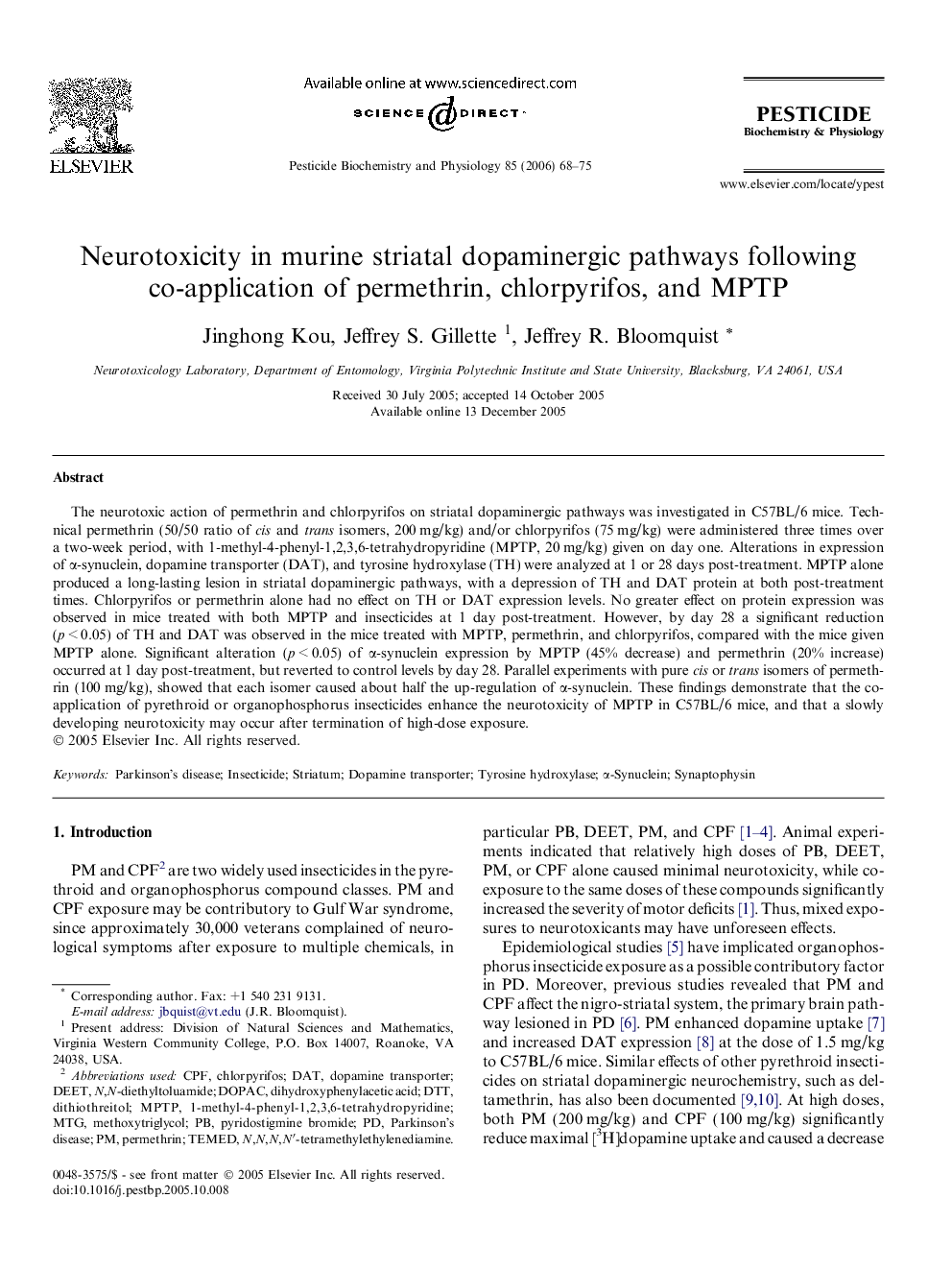| Article ID | Journal | Published Year | Pages | File Type |
|---|---|---|---|---|
| 2010108 | Pesticide Biochemistry and Physiology | 2006 | 8 Pages |
The neurotoxic action of permethrin and chlorpyrifos on striatal dopaminergic pathways was investigated in C57BL/6 mice. Technical permethrin (50/50 ratio of cis and trans isomers, 200 mg/kg) and/or chlorpyrifos (75 mg/kg) were administered three times over a two-week period, with 1-methyl-4-phenyl-1,2,3,6-tetrahydropyridine (MPTP, 20 mg/kg) given on day one. Alterations in expression of α-synuclein, dopamine transporter (DAT), and tyrosine hydroxylase (TH) were analyzed at 1 or 28 days post-treatment. MPTP alone produced a long-lasting lesion in striatal dopaminergic pathways, with a depression of TH and DAT protein at both post-treatment times. Chlorpyrifos or permethrin alone had no effect on TH or DAT expression levels. No greater effect on protein expression was observed in mice treated with both MPTP and insecticides at 1 day post-treatment. However, by day 28 a significant reduction (p < 0.05) of TH and DAT was observed in the mice treated with MPTP, permethrin, and chlorpyrifos, compared with the mice given MPTP alone. Significant alteration (p < 0.05) of α-synuclein expression by MPTP (45% decrease) and permethrin (20% increase) occurred at 1 day post-treatment, but reverted to control levels by day 28. Parallel experiments with pure cis or trans isomers of permethrin (100 mg/kg), showed that each isomer caused about half the up-regulation of α-synuclein. These findings demonstrate that the co-application of pyrethroid or organophosphorus insecticides enhance the neurotoxicity of MPTP in C57BL/6 mice, and that a slowly developing neurotoxicity may occur after termination of high-dose exposure.
